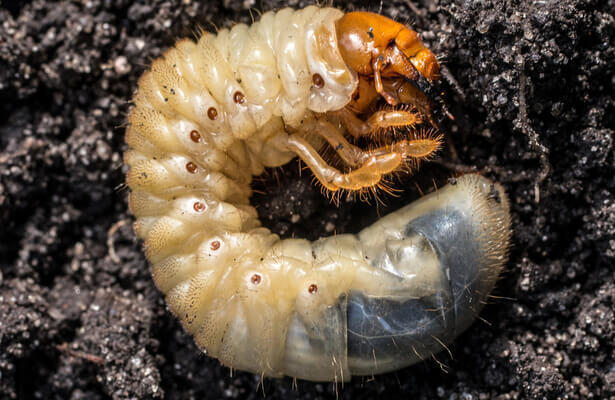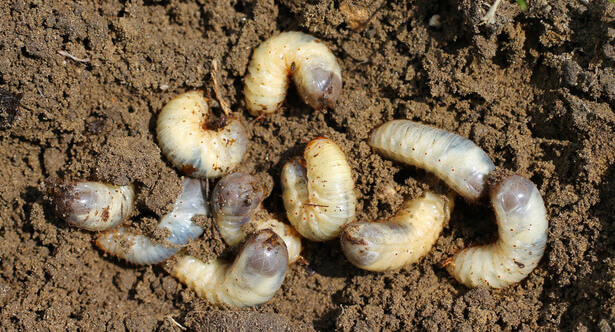When you try composting, you never cease to be surprised by Nature and all that can happen in a simple bin filled with ‘waste’. And in the surprise category, coming across large white worms is a nice one… or not!
In the maturation phase, the compost begins to populate with larger organisms (than the micro-organisms at work until then…): mites, sowbugs, beetles, millipedes but especially compost worms will find their happiness in your decomposing heap, nibbling little by little as they pass the materials through their digestive tract!
White worms in the compost

Among all the macro-organisms that make composting (compost or manure worms, insects, mites, gastropods, myriapods, sowbugs…) that appear in the maturation phase of compost. Let’s take a look at the white worms to recognize them…
Many people spontaneously think of chafer larvae when they see grubs in their compost. In fact, they can also be golden spider beetles.
Remember, the larvae of the common chafer are commonly referred to as grubs. Chafer larvae are found in the soil at a depth of about 20 cm. The beetles lay their eggs in a pile, preferably in loose, warm soil.
Grubs, or cockchafer larvae, cause damage to the lawn by feeding on the roots of turf grasses. Damaged areas turn yellow or brown. Affected turf rises like a slab. The chafer larva feeds on all kinds of roots (beets, strawberries, lettuce, etc.). The adult beetle devours the young leaves of trees.
In the compost, we find more larvae of the golden beetle
Therefore, do not confuse the larvae of the cockchafer with the larvae of the golden beetle. The beetle is a useful insect for the decomposition of compost and the degradation of materials.

Compost grubs – Grasshoppers, useful in the process
Contrary to the larvae of cockchafer beetles, which cause damage in the vegetable garden, the beetles are completely harmless: it is therefore useless to destroy them. On the contrary, the larvae of the golden beetle participate in the making of humus and compost, as long as dead wood (branches, etc.) is included.
To differentiate them: the worm of the golden beetle has a small head and a large abdomen, while it is the opposite for the larva of the cockchafer.

